Hyundai Kona vs Skoda Kodiaq – Differences & prices compared
Compare performance, boot space, consumption and price in one view.
Find out now: which car is the better choice for you – Hyundai Kona or Skoda Kodiaq?
The Hyundai Kona (SUV) comes with a Electric, Petrol or Full Hybrid engine and Automatic or Manuel transmission. In comparison, the Skoda Kodiaq (SUV) features a Plugin Hybrid, Petrol, Petrol MHEV or Diesel engine with Automatic transmission.
When it comes to boot capacity, the Hyundai Kona offers 466 L, while the Skoda Kodiaq provides 910 L – depending on how much space you need. If you’re looking for more power, decide whether the 218 HP of the Hyundai Kona or the 265 HP of the Skoda Kodiaq suits your needs better.
In terms of consumption, the values are 14.60 kWh4.60 L per 100 km for the Hyundai Kona, and 0.40 L for the Skoda Kodiaq.
Price-wise, the Hyundai Kona starts at 23100 £, while the Skoda Kodiaq is available from 36800 £. Compare all the details and find out which model fits your lifestyle best!
Hyundai Kona
The Hyundai Kona blends a bold design with a versatile interior, making it a standout choice in the compact SUV market. Its crisp handling and responsive steering provide an engaging driving experience, whether in the city or on the open road. The vehicle also offers a range of features designed to enhance comfort and connectivity, ensuring a pleasurable journey for both driver and passengers.
details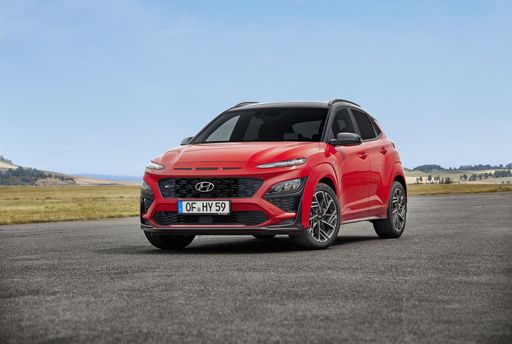 @ hyundai.news
@ hyundai.news
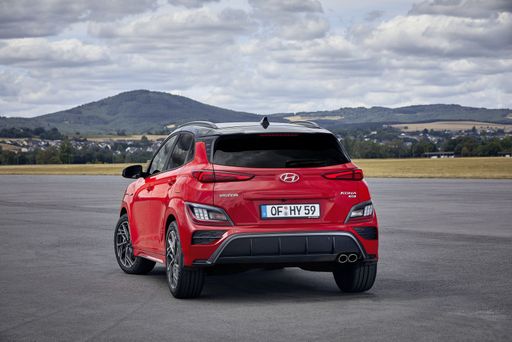 @ hyundai.news
@ hyundai.news
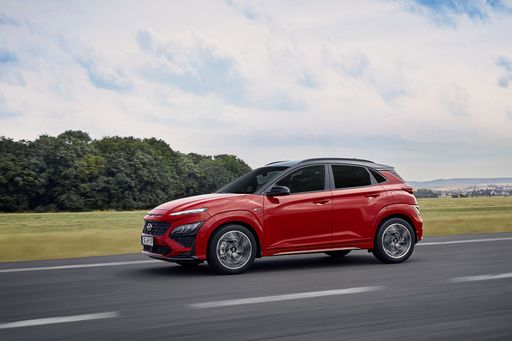 @ hyundai.news
@ hyundai.news
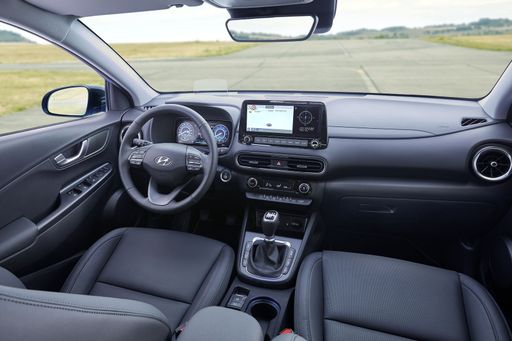 @ hyundai.news
@ hyundai.news
Skoda Kodiaq
The Škoda Kodiaq impresses with its spacious interior and sleek design, making it a popular choice for families and adventurers alike. Equipped with a range of modern features, it offers a comfortable driving experience and outstanding versatility. Its robust build and refined handling make it suitable for both urban settings and countryside escapades.
details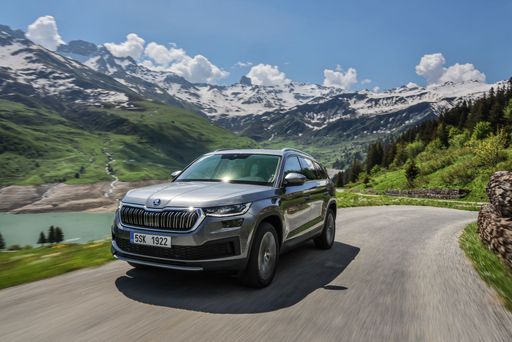 @ skoda-media.de
@ skoda-media.de
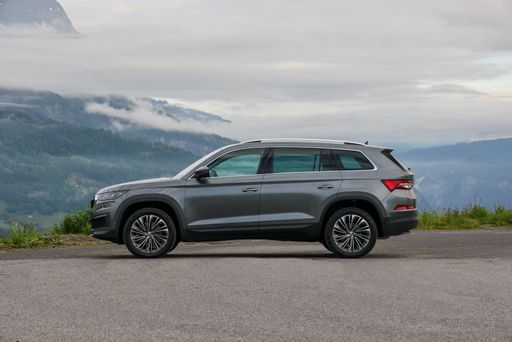 @ skoda-media.de
@ skoda-media.de
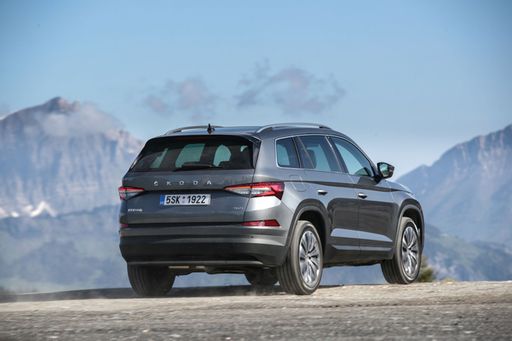 @ skoda-media.de
@ skoda-media.de
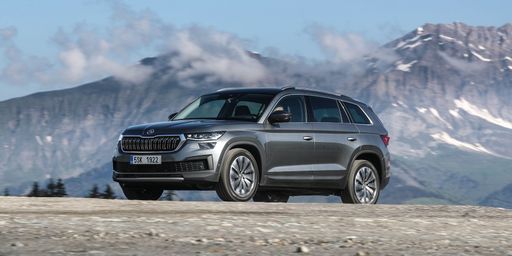 @ skoda-media.de
@ skoda-media.de
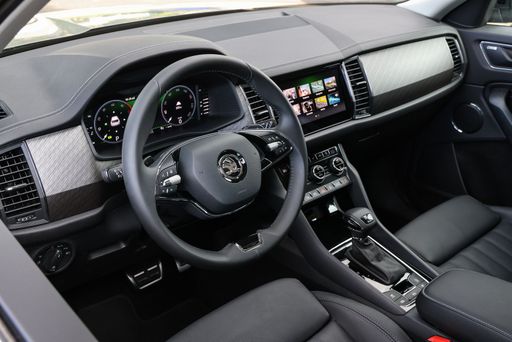 @ skoda-media.de
@ skoda-media.de

|

|
|
|
|
Costs and Consumption |
|
|---|---|
|
Price
23100 - 41600 £
|
Price
36800 - 49600 £
|
|
Consumption L/100km
4.6 - 7 L
|
Consumption L/100km
0.4 - 8.2 L
|
|
Consumption kWh/100km
14.6 - 16.8 kWh
|
Consumption kWh/100km
-
|
|
Electric Range
377 - 514 km
|
Electric Range
113 - 123 km
|
|
Battery Capacity
1.3 - 65.4 kWh
|
Battery Capacity
19.70 kWh
|
|
co2
0 - 163 g/km
|
co2
9 - 186 g/km
|
|
Fuel tank capacity
38 - 47 L
|
Fuel tank capacity
45 - 58 L
|
Dimensions and Body |
|
|---|---|
|
Body Type
SUV
|
Body Type
SUV
|
|
Seats
5
|
Seats
5
|
|
Doors
5
|
Doors
5
|
|
Curb weight
1370 - 1773 kg
|
Curb weight
1684 - 1970 kg
|
|
Trunk capacity
466 L
|
Trunk capacity
745 - 910 L
|
|
Length
4350 - 4385 mm
|
Length
4758 - 4761 mm
|
|
Width
1825 mm
|
Width
1864 mm
|
|
Height
1580 - 1585 mm
|
Height
1663 - 1683 mm
|
|
Payload
420 - 490 kg
|
Payload
460 - 545 kg
|
Engine and Performance |
|
|---|---|
|
Engine Type
Electric, Petrol, Full Hybrid
|
Engine Type
Plugin Hybrid, Petrol, Petrol MHEV, Diesel
|
|
Transmission
Automatic, Manuel
|
Transmission
Automatic
|
|
Transmission Detail
Manual Gearbox, Dual-Clutch Automatic
|
Transmission Detail
Dual-Clutch Automatic
|
|
Drive Type
Front-Wheel Drive, All-Wheel Drive
|
Drive Type
Front-Wheel Drive, All-Wheel Drive
|
|
Power HP
115 - 218 HP
|
Power HP
150 - 265 HP
|
|
Acceleration 0-100km/h
7.8 - 11.9 s
|
Acceleration 0-100km/h
6.3 - 9.7 s
|
|
Max Speed
162 - 210 km/h
|
Max Speed
205 - 231 km/h
|
|
Torque
200 - 265 Nm
|
Torque
250 - 400 Nm
|
|
Number of Cylinders
3 - 4
|
Number of Cylinders
4
|
|
Power kW
85 - 160 kW
|
Power kW
110 - 195 kW
|
|
Engine capacity
998 - 1598 cm3
|
Engine capacity
1498 - 1984 cm3
|
General |
|
|---|---|
|
Model Year
2024 - 2025
|
Model Year
2024 - 2025
|
|
CO2 Efficiency Class
A, D, C, E, F
|
CO2 Efficiency Class
B, F, G, E
|
|
Brand
Hyundai
|
Brand
Skoda
|
Hyundai Kona
The Hyundai Kona: A Comprehensive Overview
The Hyundai Kona has established itself as a standout in the compact SUV segment, blending innovation with performance and style. As the automotive world moves towards more sustainable and efficient options, the Kona offers a variety of powertrains, from traditional petrol engines to full hybrids and all-electric models.
Powertrain Options and Performance
The Hyundai Kona's powertrain choices cater to a wide range of preferences. For petrol enthusiasts, the Kona offers a 1.0L T-GDI engine, delivering 100 PS, and a more robust 1.6L T-GDI variant with up to 170 PS. Those looking for efficiency without sacrificing power can consider the full hybrid model, offering 129 PS and an impressive consumption of 4.5 L/100km.
For a greener option, the all-electric Kona provides a compelling case. With battery capacities of up to 65.4 kWh, the electric Kona offers power outputs of 156 to 218 PS, and efficiencies as low as 14.6 kWh/100km, enabling an electric range of up to 513 km.
Technical Specifications and Innovations
Built on a robust platform, the Kona delivers versatility and reliability. With a choice between manual or dual-clutch automatic gearboxes, along with options for front-wheel or all-wheel drive, the Kona ensures a tailored driving experience. The handling is enhanced by the car's lightweight construction, balancing a 1370 to 1773 kg curb weight with dynamic performance.
The Kona's design doesn't compromise cargo space for style; it offers a generous 466 L boot capacity. With a relatively compact body, measuring 4350 to 4385 mm in length, the Kona easily navigates urban environments while still commanding a strong road presence with its 1825 mm width.
Efficiency and Eco-Friendliness
Hyundai is committed to reducing emissions, as evidenced by the Kona's CO2 efficiency ratings, which range from class A for electric models to class D for some higher-performance petrol variants. The focus on reducing environmental impact without sacrificing driving pleasure is notable throughout the Kona range.
Costing and Value
The Hyundai Kona offers commendable value for money. Pricing starts at €26,400 and reaches up to €50,690, depending on the chosen configuration. The monthly running costs range from €956 to €1090, with a cost per kilometre of 38.3 to 43.6 cents, making it a competitive option in its class.
Conclusion: Modern, Efficient, and Versatile
The Hyundai Kona stands as a testament to Hyundai's commitment to innovation, efficiency, and practicality. Whether you are inclined towards a traditional combustion engine, a hybrid for a balance of power and efficiency, or a full electric model for maximum eco-friendliness, the Kona provides a tailored solution for each unique driver preference.
Skoda Kodiaq
The Skoda Kodiaq: An SUV at the Cutting Edge of Technology
The Skoda Kodiaq, a strikingly designed SUV, continues to impress with its blend of power, efficiency, and innovation. This popular model from Skoda combines advanced engineering with modern comforts, making it a favourite for families and adventurers alike. In this article, we'll delve into the technical details and innovations that make the Skoda Kodiaq a standout in the auto industry.
Powerful Performance Options
The Skoda Kodiaq offers a range of engine options to suit different driving preferences. From the efficient PlugIn-Hybrid models with up to 204 PS to the robust Diesel engines with up to 193 PS, drivers can choose the balance of power and efficiency that suits them. The performance is managed by an automatic transmission system, ensuring a smooth and responsive ride.
Innovation in Hybrid Technology
Skoda has taken significant strides in integrating hybrid technology into the Kodiaq. The PlugIn-Hybrid models boast an impressive electric range of up to 123 km, a testament to their efficient powertrain technology. Mild-Hybrid options are also available, offering a clever blend of petrol power with electrical assistance to reduce fuel consumption and emissions.
Comfortable and Spacious Interior
The Kodiaq's interior is designed with both luxury and practicality in mind. It offers ample space, with a boot capacity ranging from 745 to 910 litres, making it ideal for long journeys or family holidays. The vehicle's interior dimensions, complemented by a variety of high-tech features, ensure comfort and convenience for all passengers.
Advanced Safety Features
Safety is a top priority in the Skoda Kodiaq, with features such as advanced driver assistance systems, multiple airbags, and comprehensive stability controls. These technologies work together to provide drivers and passengers with peace of mind, whether on city streets or long motorway drives.
Impressive Fuel Efficiency
With fuel consumption rates as low as 0.4 L/100 km for hybrid versions, the Kodiaq sets high standards in terms of efficiency. Its Diesel counterparts also deliver competitive fuel economy. These efficient performances not only benefit your pocket but also contribute to reducing your carbon footprint.
Conclusion: A Blend of Efficiency and Power
In conclusion, the Skoda Kodiaq stands out with its combination of power, efficiency, and innovative technologies. With a variety of configurations to choose from, it is a vehicle that caters to diverse needs while ensuring an engaging driving experience. Whether it's the robust Diesel engines or the eco-friendly hybrid models, the Kodiaq continues to lead the way in the SUV segment.
What drive types are available for the Hyundai Kona?
Available configurations include Front-Wheel Drive or All-Wheel Drive.
The prices and data displayed are estimates based on German list prices and may vary by country. This information is not legally binding.
